Opening from September 24 to October 2, 2022, is the XXXII edition of the Florence Biennale Internazionale dell’Antiquariato, the world’s oldest exhibition-market, held as per tradition in the sumptuous halls of Palazzo Corsini in Florence. This is an edition of the highest quality where important purchases are already beginning: many, in fact, are the works that could very well be in our museums. We visited the fair in preview and here is a selection of twenty works not to be missed for those who will want to travel to Florence for the exhibition.
Work discovered by scholar Gian Lorenzo Mellini, who called Gaspare Landi’sAntiochus and Stratonyx a “painting linguistically Canova-like” and “superior to what is known to us of the painter Canova.” A masterpiece of neoclassical art, it paints a subject particularly dear to neoclassical artists, an episode from Plutarch’s Life of Demetrius, which tells of the love between Antiochus I, ruler of the Seleucid empire, and his father’s second wife, Stratonice-a love that consumed Antiochus to the point of making him ill. In the painting, Landi depicts, with certain narrative emphasis, Antiochus lying on his bed with the physician Erasistratus at his side, pointing to Stratonice to show the cause of his illness.
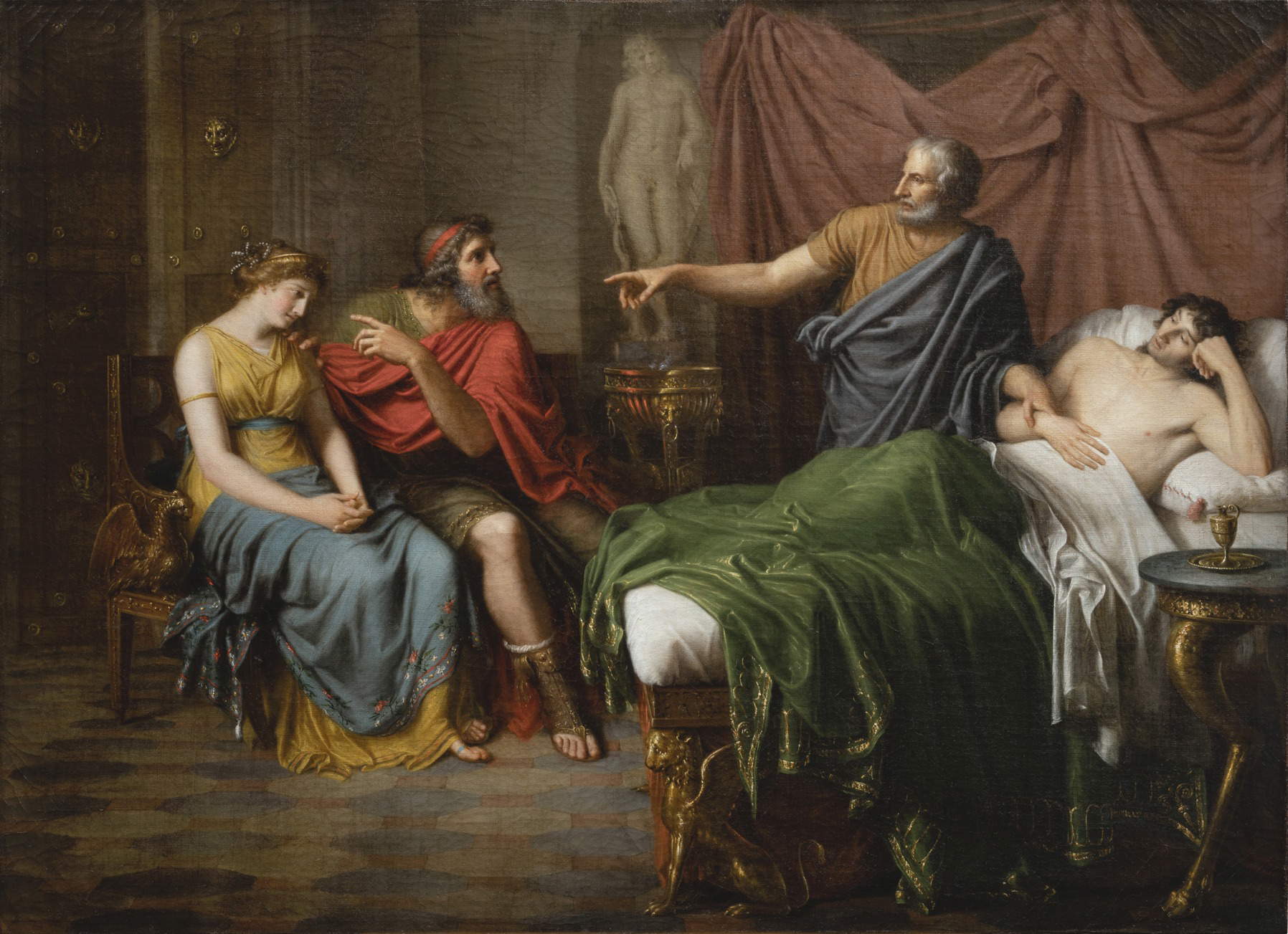
This panel by Giovanni di Pietro da Pisa, an artist documented in Genoa between 1401 and 1423 but whose date of birth we do not know, was part of a predella entirely dedicated to the martyr Stephen and of which the left compartment, depicting the condemnation and stoning of Saint Stephen, is also known. The compartments can be linked to the triptych with the Virgin and Child between Saints Agatha, Stephen, Francis and Christina signed by Giovanni da Pisa and currently preserved at the Museu Nacional d’Art de Catalunya. A rather rare painter, Giovanni di Pietro da Pisa manifests manners similar to those of Barnabas of Modena and Nicolò da Voltri, both painters working in Liguria during the International Gothic period.
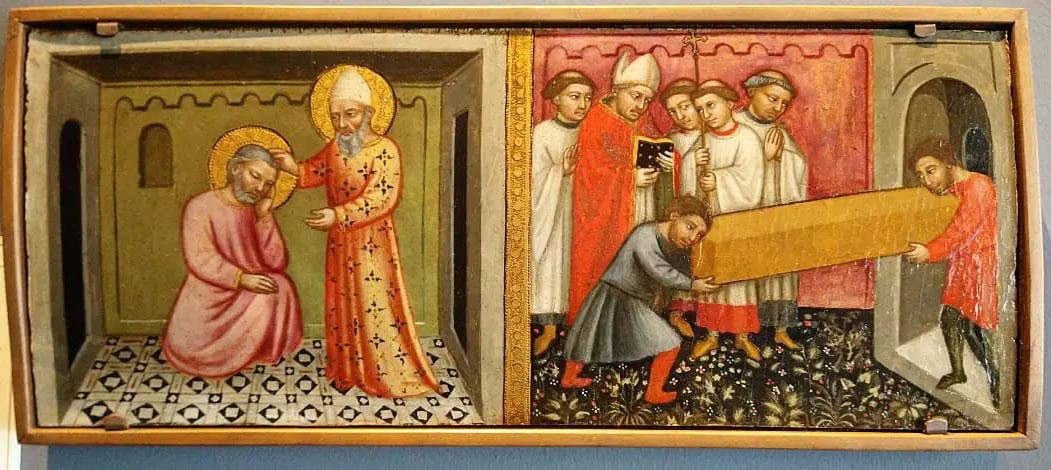
This large canvas of Palma il Giovane’s maturity comes from the Genoese collection of Cesare Viazzi, where it is attested until 1916, after which it was sold in Genoa and passed to the Luigi Lucatello collection and came by inheritance to the present owner. Although it is a work known to scholars (in fact, it was included in the Complete Works of Palma il Giovane compiled by Stefania Mason Rinaldi in 1984), it has never been exhibited in public: therefore, BIAF 2022 is an opportunity to admire this splendid painting with a mythological subject by one of the greatest Venetian artists of the second half of the 16th century. In addition, Canesso’s booth also exhibits other gems: a rare sculpture, The Guardian of the Kitchen Garden, which translates Arcimboldo’s fruit compositions into Viggiù stone; a very powerful Saint Andrew by Pier Francesco Mola; and a delicate Madonna of the Rose by Simon Vouet.
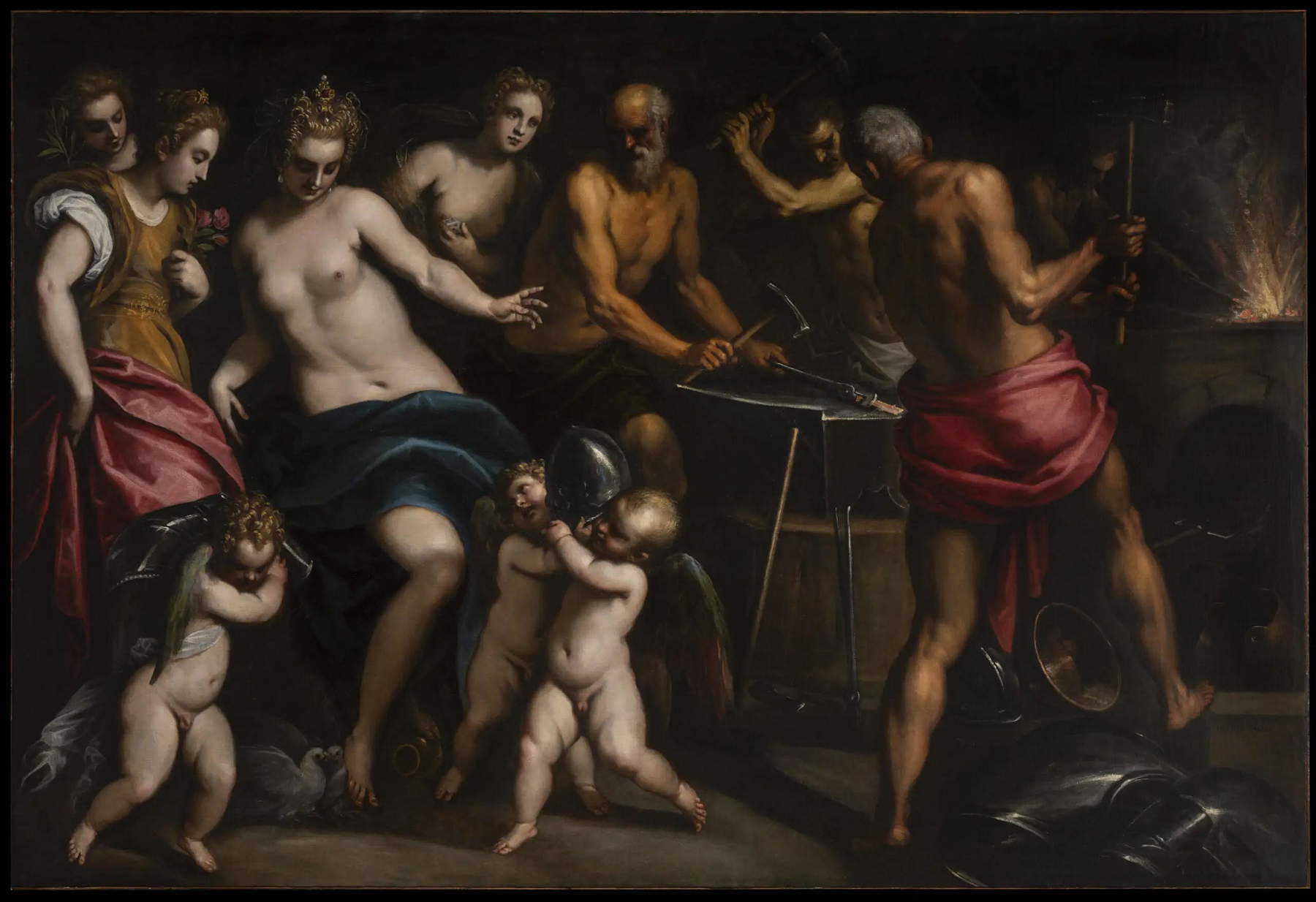
Robilant+Voena’s booth is one of the best in the entire BIAF: the back wall is enough, with Lucio Fontana ’s bronze Spatial Concept and Giovanni del Biondo’s Crucifix in close dialogue. What caught our attention, however, is a stunning painting by Niccolò Tornioli, The Banquet of Absalom, dedicated to the story of Absalom and his elder half-brother, Amnon. Both were sons of King David and divided by a deep hatred: for Amar had raped Tamar, Assalon’s sister, and the latter, in revenge, had Amnon killed at a banquet two years later, in the presence of all David’s sons. It is one of the best works by its author, a singular Sienese Caravaggesque who specialized in crowded scenes such as this (the Banquet is among his most concise achievements), and was moreover awarded the best painting of this edition of the BIAF. A work for a great museum.
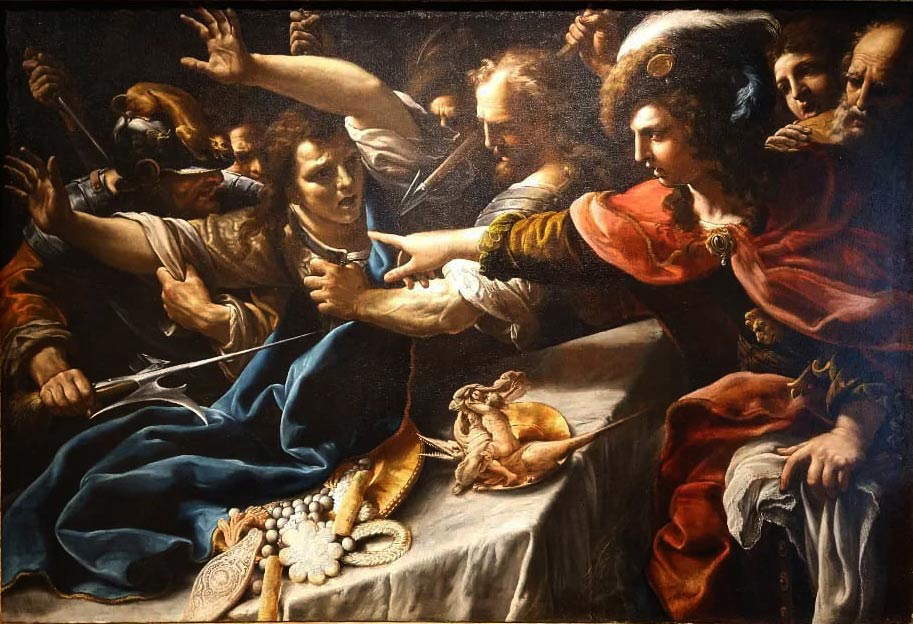
Altomani & Sons is presented at BIAF with two masterpieces by Ioannes Hispanus that the Milanese public recently saw at the Museo Poldi Pezzoli’s exhibition on Federico Zeri: these two paintings, which recount a novella by Boccaccio, that of Cimone and Efigenia, had in fact been the subject of the great Roman art historian’s work, although the subject would later be identified by Alessandra Galizzi, who provided the correct reading by identifying the episode from the Decameron. These are two rare works by this singular painter, also mentioned in the literature as “Giovanni Ispano,” who worked in half of Italy between the fifteenth and sixteenth centuries, and who was a bizarre “stunned classicist,” as per Roberto Cara’s effective definition.
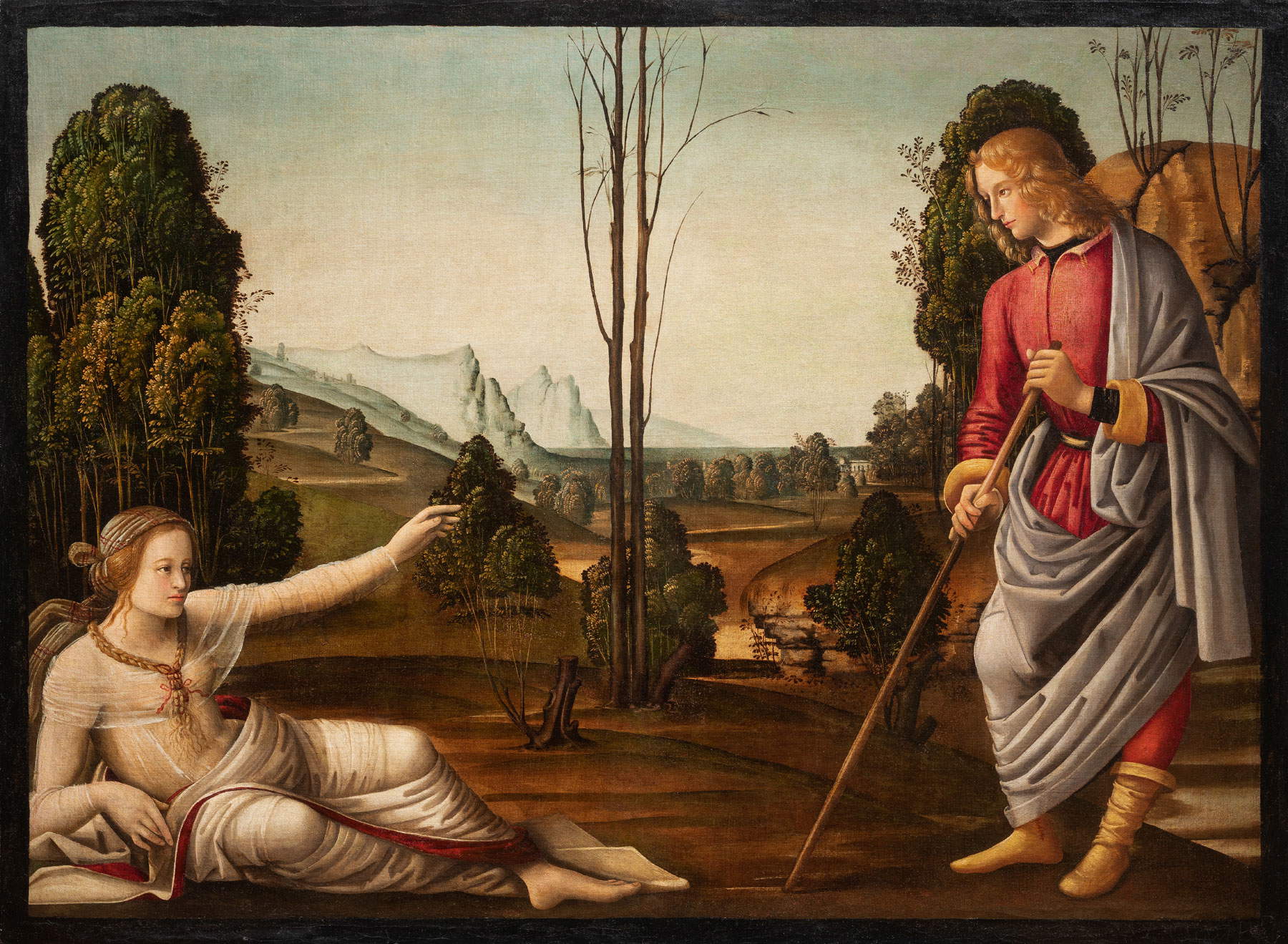
Among Lorenzo Viani’s best-known masterpieces, Il mulino di Giuncugnano, which depicts a mill in the village of Garfagnana (so we are in the homeland of this great painter, a European-level expressionist, although still little known to the general public), went to auction in November 2021: from an initial estimate of 4-6,000 euros it fetched 35,000. It dates from 1920, and its uniqueness also lies in the frame, designed by the artist and an integral part of the work. It is not a usual painting in Viani’s production, who preferred paintings with figures to views. However, his deformed and restless look at reality is not unusual, which also shines through in the way the painter renders the proportions and shapes of the mill.
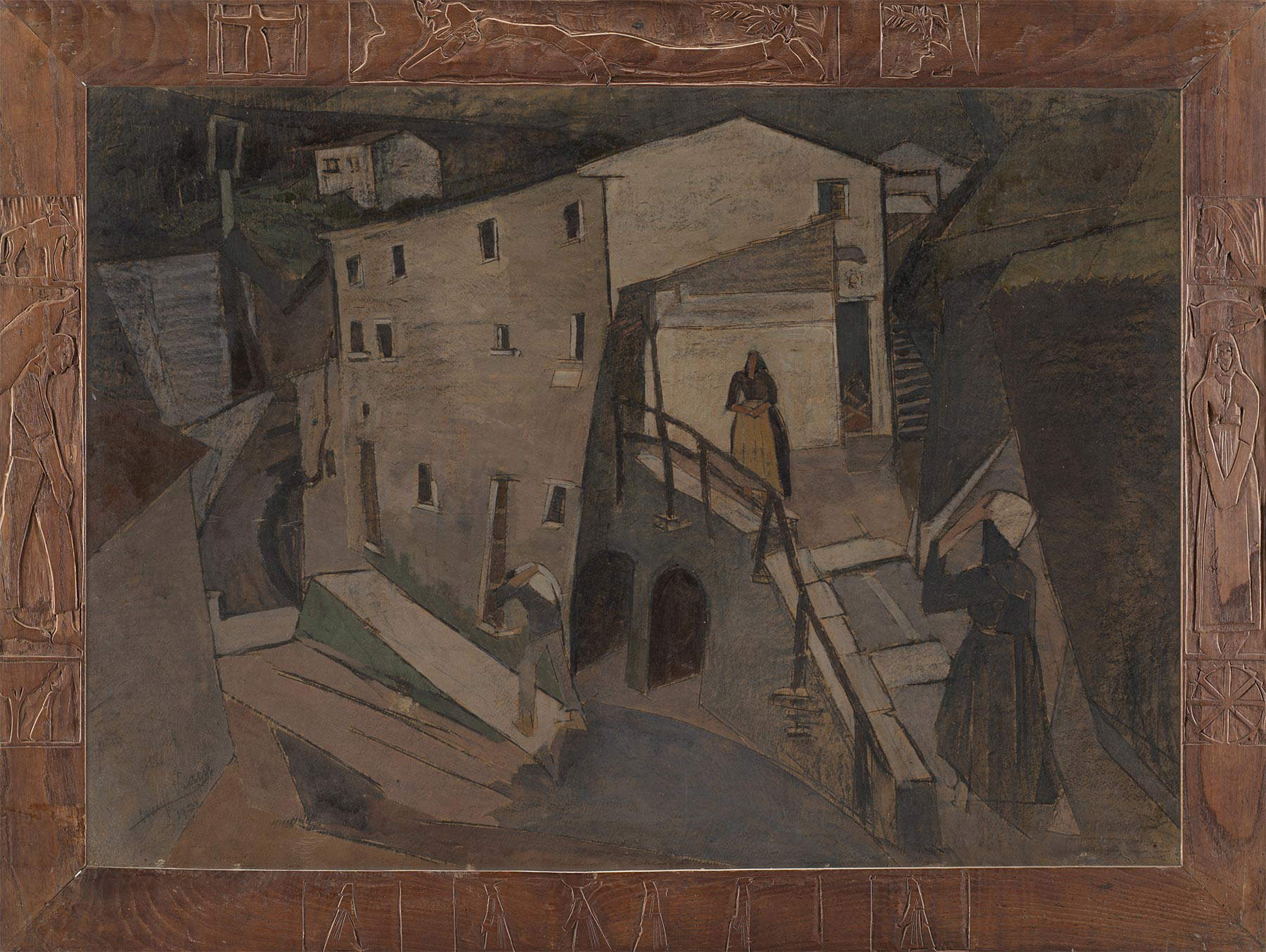
Wonderful allegorical painting by Antiveduto Gramatica, a Caravaggio painter trained, however, in Siena in the ways of Federico Barocci. The Justice and Peace that Butterfly presents at BIAF 2022 has an illustrious provenance, since in 1635 it is mentioned in an inventory of the Savoy collections as “Justice and Peace, kissing each other, with a horn [sic].” By “horn,” of course, the compiler of the register meant the raven at the top of the painting. Discovered by Mina Gregori, this painting was confirmed as a certain work by Gianni Papi, the foremost expert on Antiveduto Gramatica, in his 1995 monograph devoted to the Roman painter. Supporting the authorship is the very high quality of the work, evident especially from certain details: the right-hand angel similar in attitude to that of the Saint Charles Borromeo with two angels, the hands of Justice, the veracity of the scales, with the reflections of light hitting the tatti, and the rendering of the fabrics.
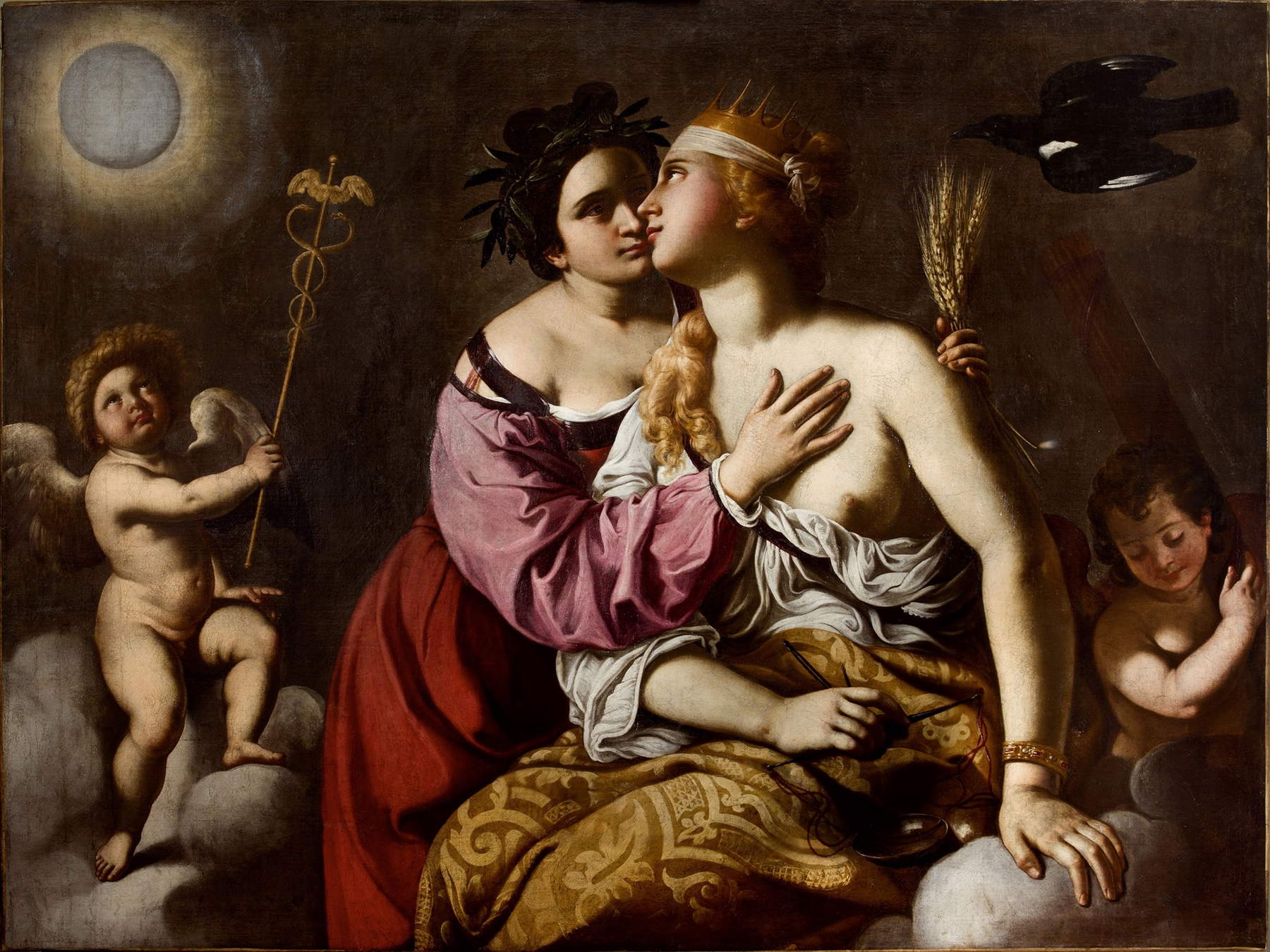
Giovanni Baratta can be considered the true initiator of the Carrara artistic tradition: these two large cherubs in statuary marble have been attributed to him by Francesco Freddolini, the leading scholar of the Carrara sculptor, who found that they came from the high altar of Santa Trinita in Florence, where they remained until 1892. In fact, there was a scenic 17th-century altar in the church until that year that was dismantled and evidently torn apart.Giovanni Baratta’s cherubs, with their dreamy expressions, wavy hair and finely investigated wings, tell this story.
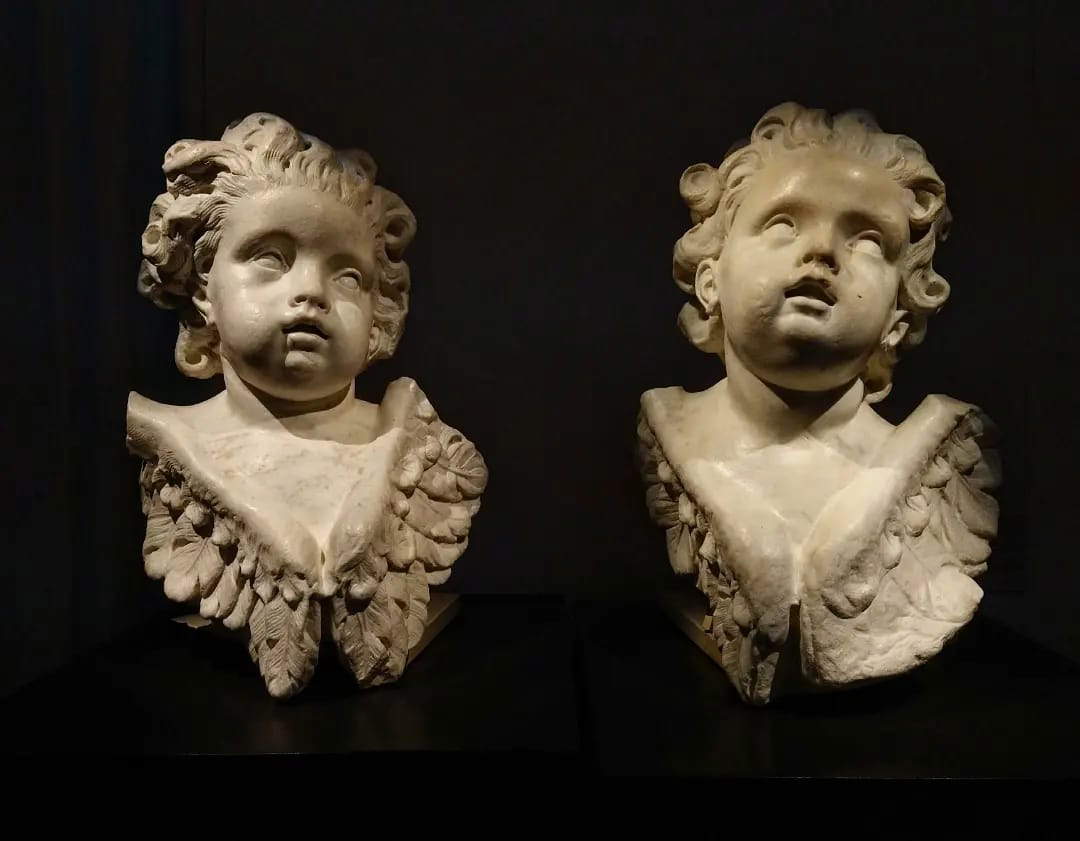
The namepiece of the Master of the Corsi Crucifix is a painted cross that was once in the Corsi collection in Florence and is now in a private collection.This anonymous artist, the author of several impressive crucifixes (one of which is preserved in the Uffizi) stands out because he looks to the art of Giotto (think, for example, of the Christ of Santa Maria Novella), reworking it, however, with much more dramatic tones. The large crucifix presented by Moretti unfortunately no longer retains the ends of the arms of the cross and the cymatium.
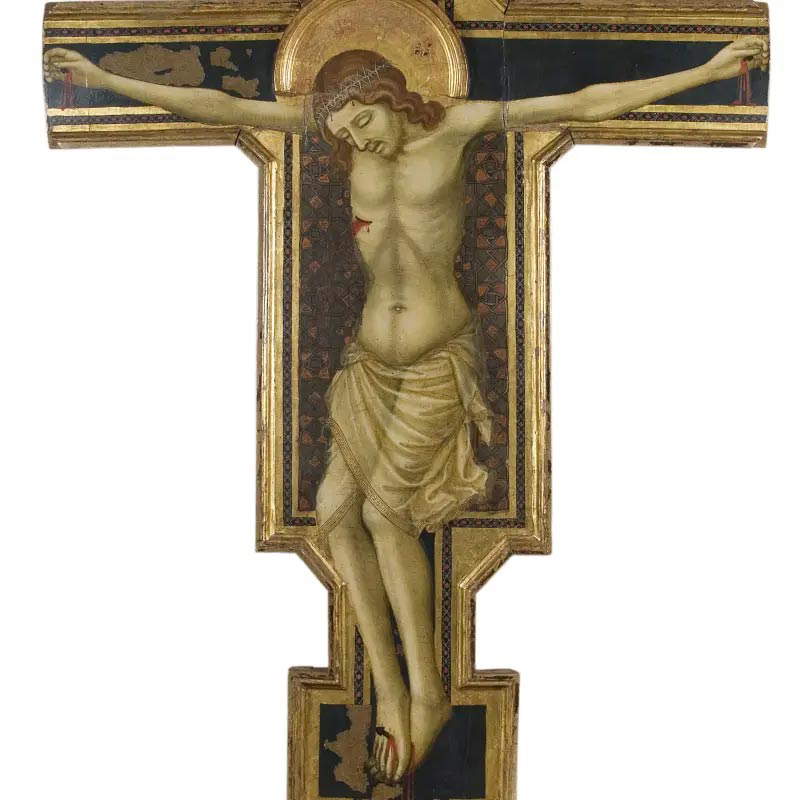
Matteo Lampertico brings to BIAF 2022 a pearl of Lucio Fontana’s ceramics, an Octopus and Shell, published in Fontana’s general catalog compiled by Enrico Crispolti in 1986 (and in the subsequent catalog raisonné of sculptures in 2006) that fully restores all the quality of the artist’s sculpture, with its movement, its immediacy, its transitions from light to shadow, its ability to refract light, effects that make Fontana’s ceramics come alive and have led several scholars to compare it, rightly, to Baroque art.
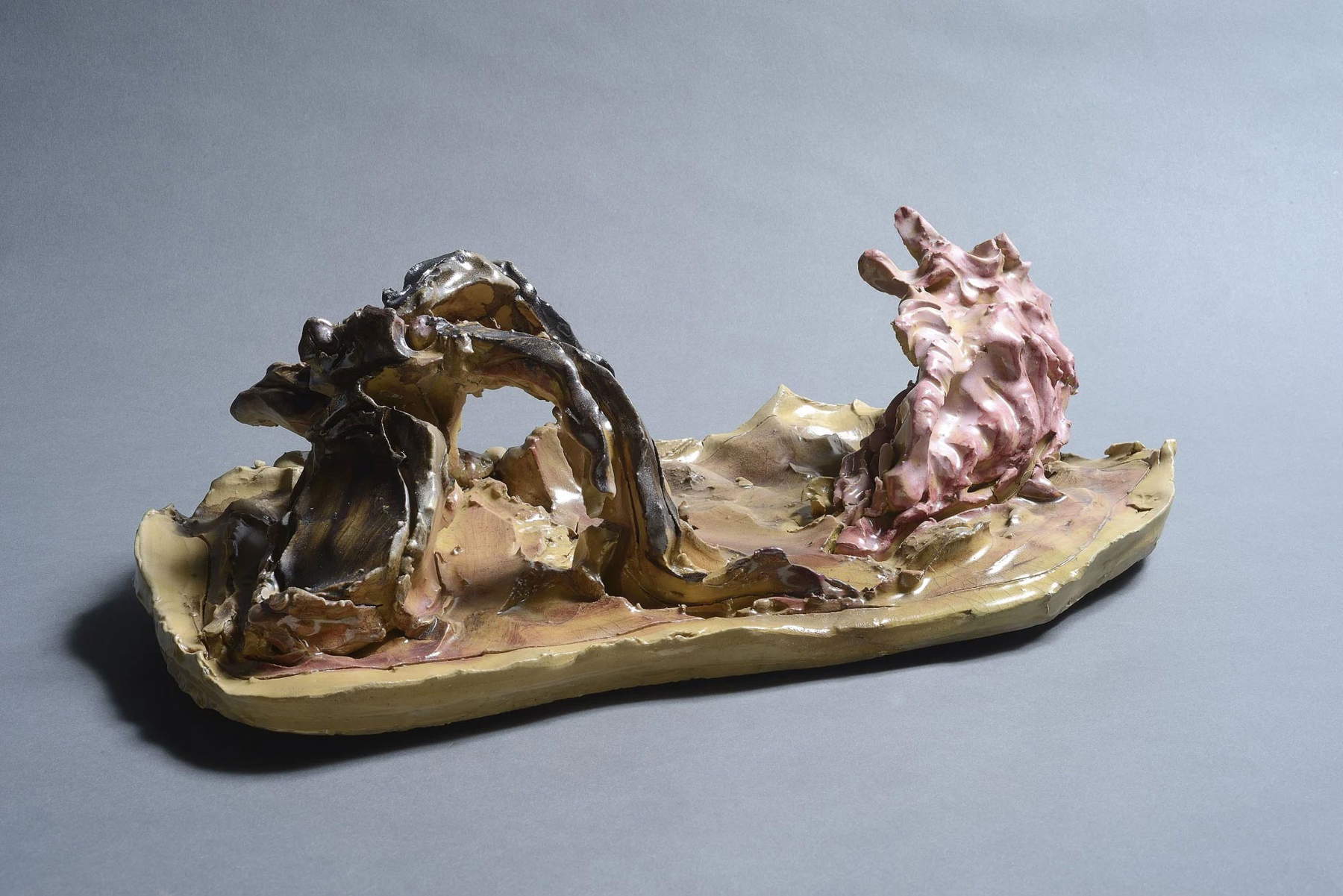
The painting comes from the Villa Medici in Fiesole, although that was probably not its original destination: more likely it arrived there when the villa was purchased in 1862 by painter and art dealer William Blundell Spence in the nineteenth century. After that, following several private collecting passages (the first of which in 1896, when Blundell Spence sold the villa and everything in it to Colonel Harry McCalmont), it came down to its current owner. The Flemish Jan Van der Straet, Italianized as Giovanni Stradano, was one of the painters involved in the undertaking of the Studiolo di Francesco I in the Palazzo Vecchio in Florence, and this one attributed to him is certainly one of the best portraits there is at BIAF 2022.
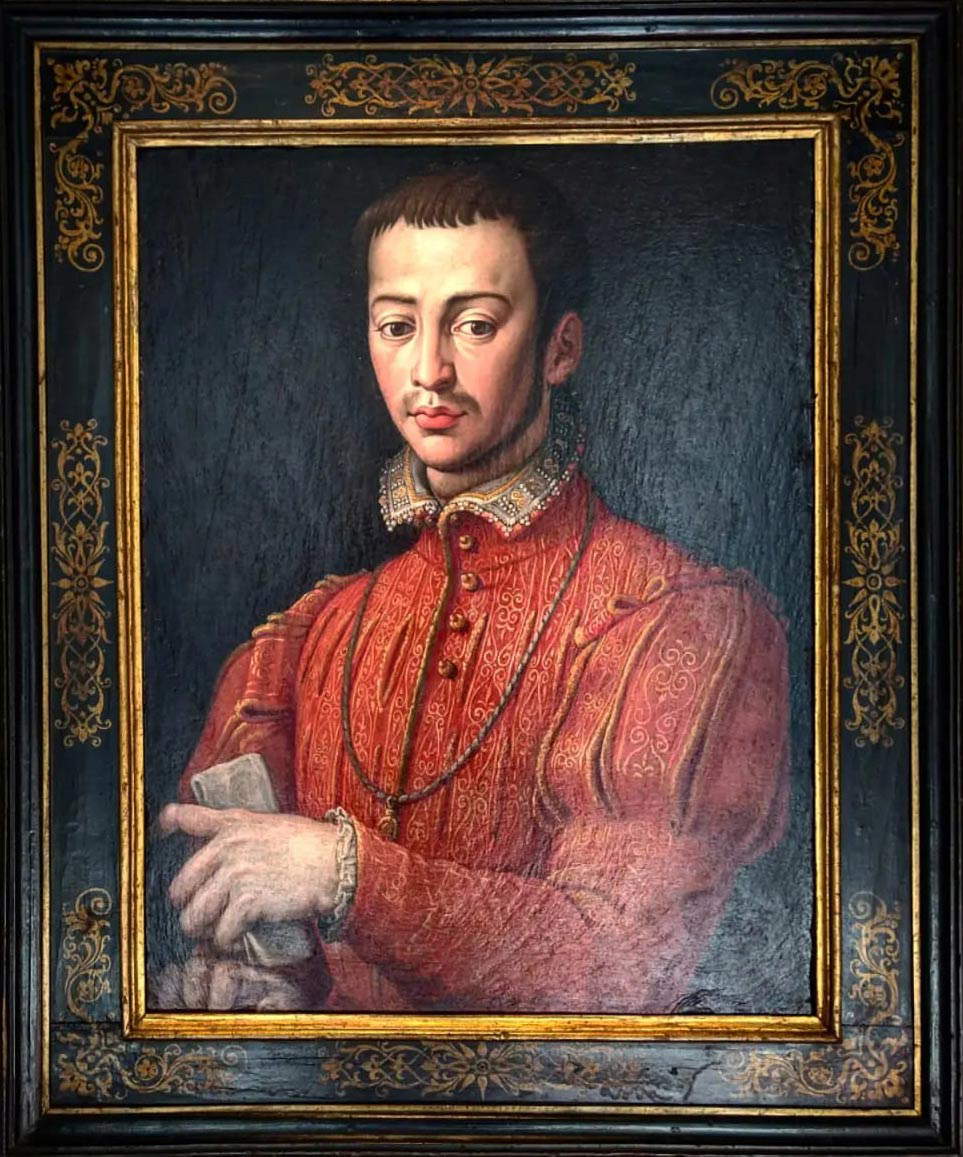
A signed and dated work, it was often exhibited in the 1990s, only to return to “rest” quietly, despite being one of the most interesting works by Ubaldo Oppi, one of the founders of the Novecento Group. It is a portrait that communicates the artist’s passion for humble people, plus the wealth of bright colors of the typical Cadore costume gives the artist an opportunity to engage in an intense chromatic challenge. The painting recently went to auction with a hammer price of 32,000 euros.
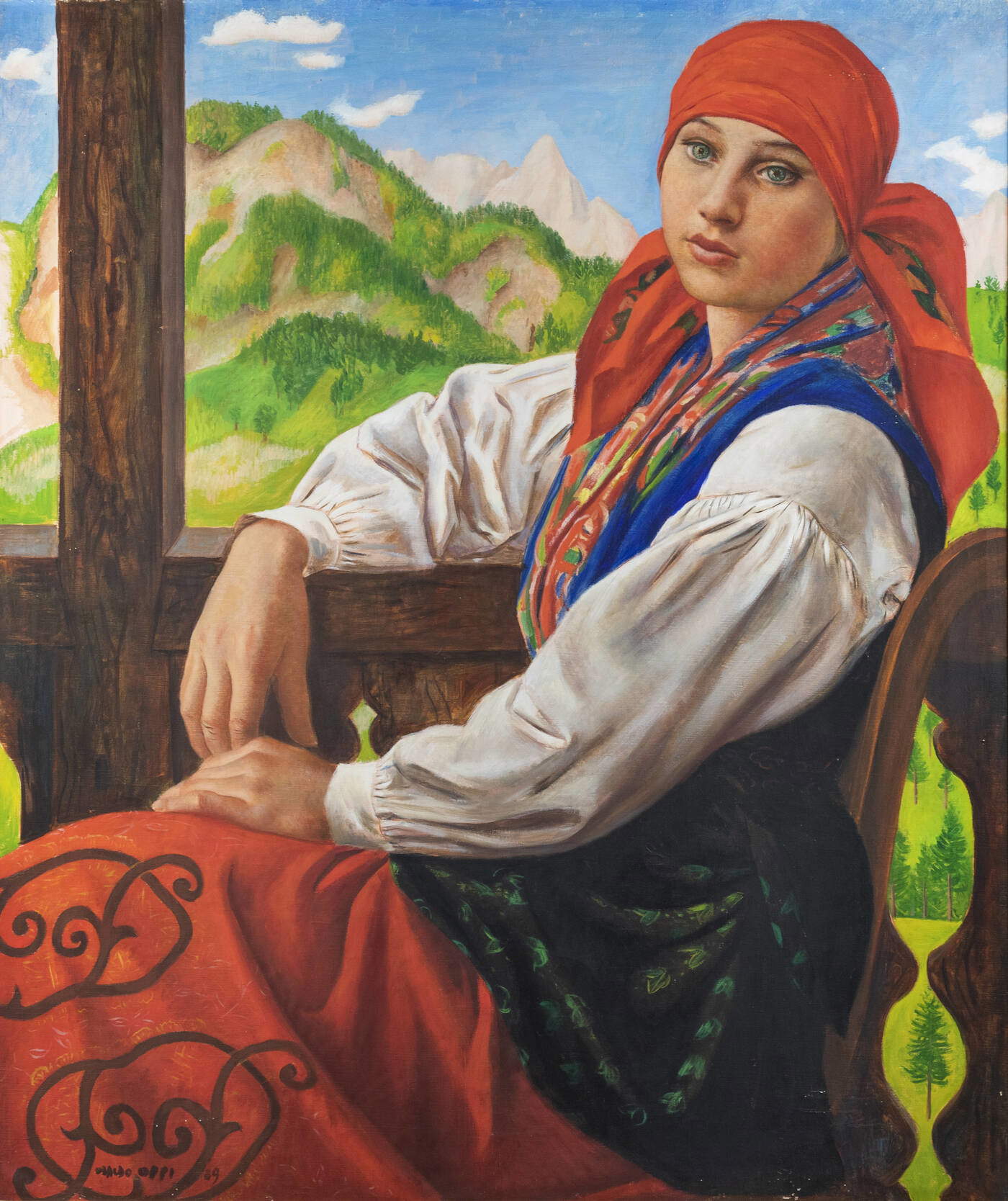
Maurizio Nobile brings to the BIAF booth a delightful unpublished work by Bernardino India, an important Veronese painter of the mid-sixteenth century. It is a Madonna and Child that appeared on the market last year, when it passed in an auction at Cambi with an estimate of 8,000/10,000 euros and adjudication at 16,975. Of great effect is the night lighting, with the Child shining with its own light and illuminating the mother’s profile: gloomy backgrounds like this were a typical peculiarity of the art of this protagonist of Venetian Mannerism.
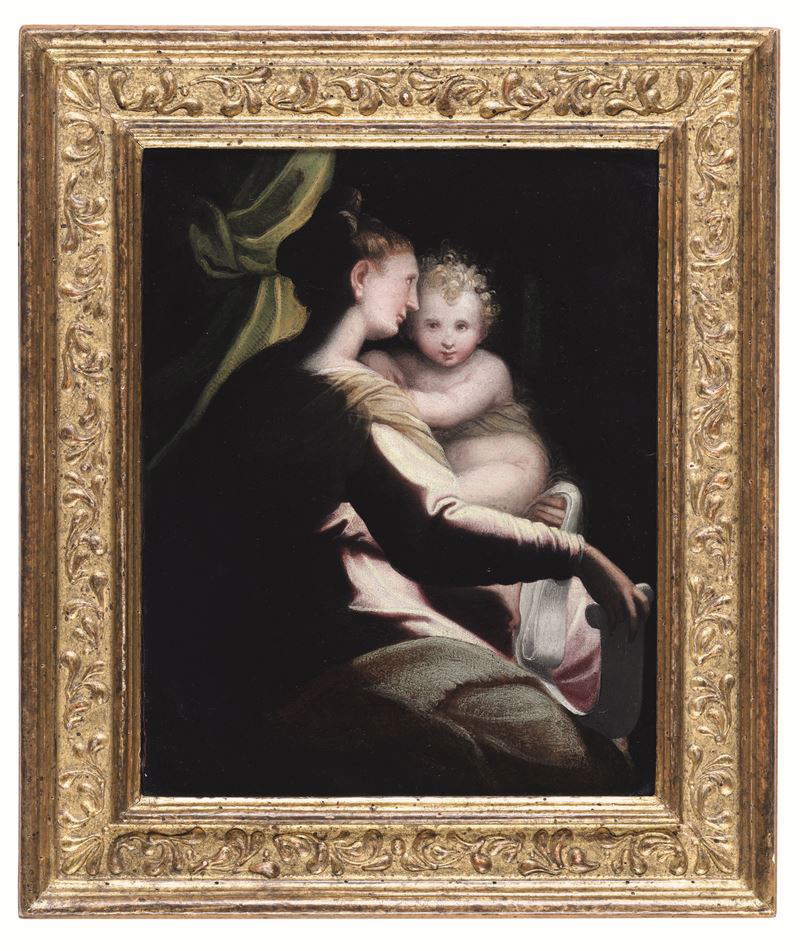
Cortona Fine Art, a gallery specializing in drawings and engravings, is exhibiting in its booth a fine sheet by Tanzio da Varallo, known to critics, which comes from a group of drawings recognizable by an ancient numbering affixed in pen, and which in ancient times collected sheets similar in technique and type. In this sheet, attributed to Tanzio da Varallo as early as the 1960s by Giovani Testori, who devoted extensive and in-depth studies to the Piedmontese painter, the artist investigates the drapery of a shepherd (or according to others a holy bishop) and the position of his hands. The sheet may be of late date and may relate to work on theAnnouncement to the Shepherds that Tanzio frescoed in 1632 on the vault of the church of Santa Maria della Pace in Milan.
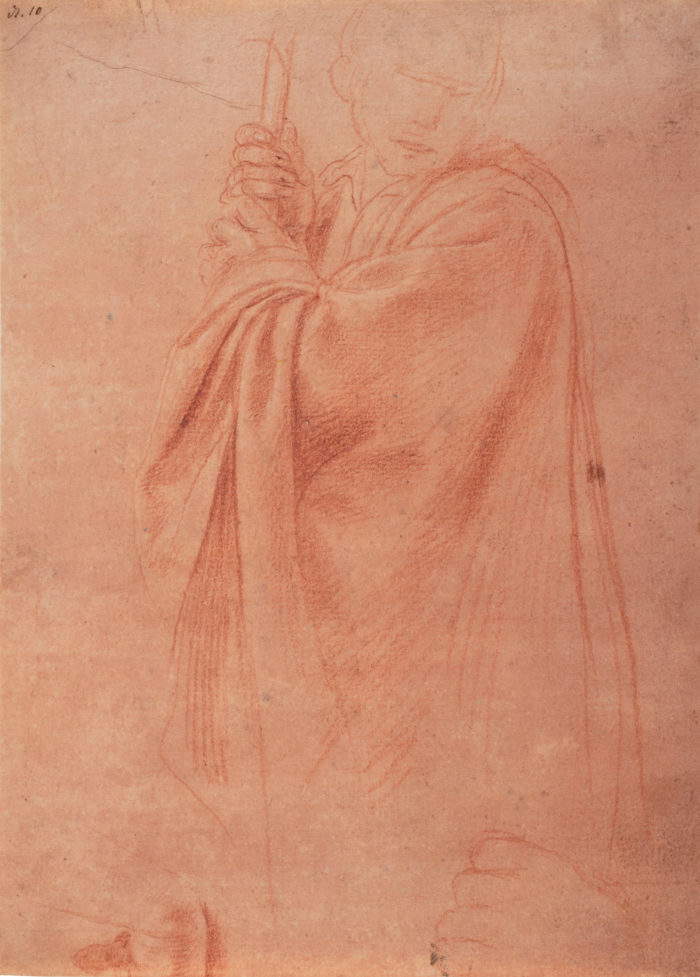
Signed and dated work: the signature, as is typical in the works of Elisabetta Sirani, a delicate and determined protagonist of the Bolognese seventeenth century, is found above a curious detail, in this case on the lace that holds the Virgin’s cloak on her shoulders. This is a quality painting that stands out for the specifications typical of the Emilian painter’s art: the emotional intensity, the soft brushstrokes, the refined luministic effects, the play of glances, and the insistence on affectionate gestures.
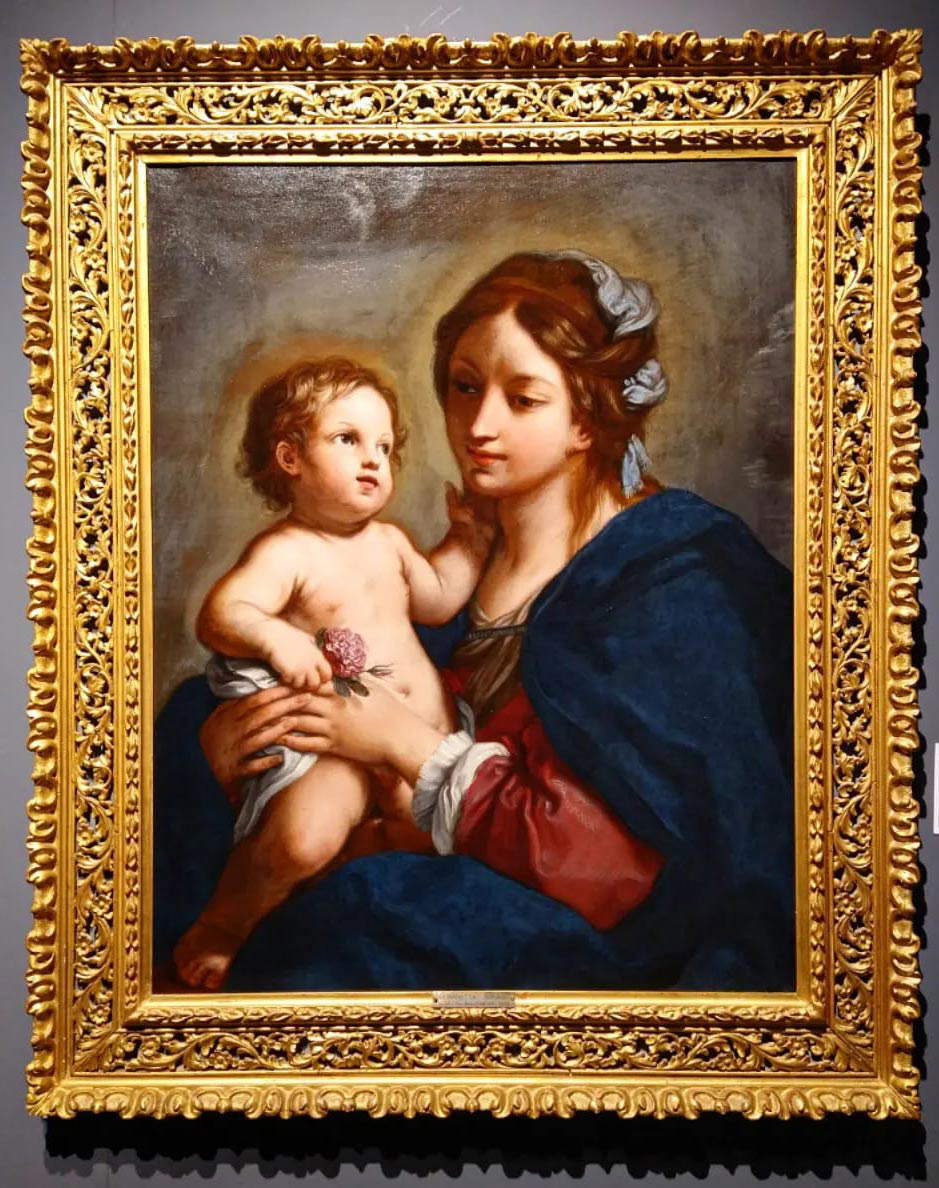
Painted around 1480, this Saint Michael by the anonymous Master of San Nicolás (so named after the church of San Nicolás in Burgos where his most important work, the altarpiece with the Last Judgment, is located), is the product of the encounter between Spain and Flanders. The author has been identified with both Diego del Corral and Diego de la Cruz, a painter, the latter, trained in Antwerp or Bruges and then moved to Spain. The style of the painting shows elements of the Nordic International and Castilian languages of the 15th century.
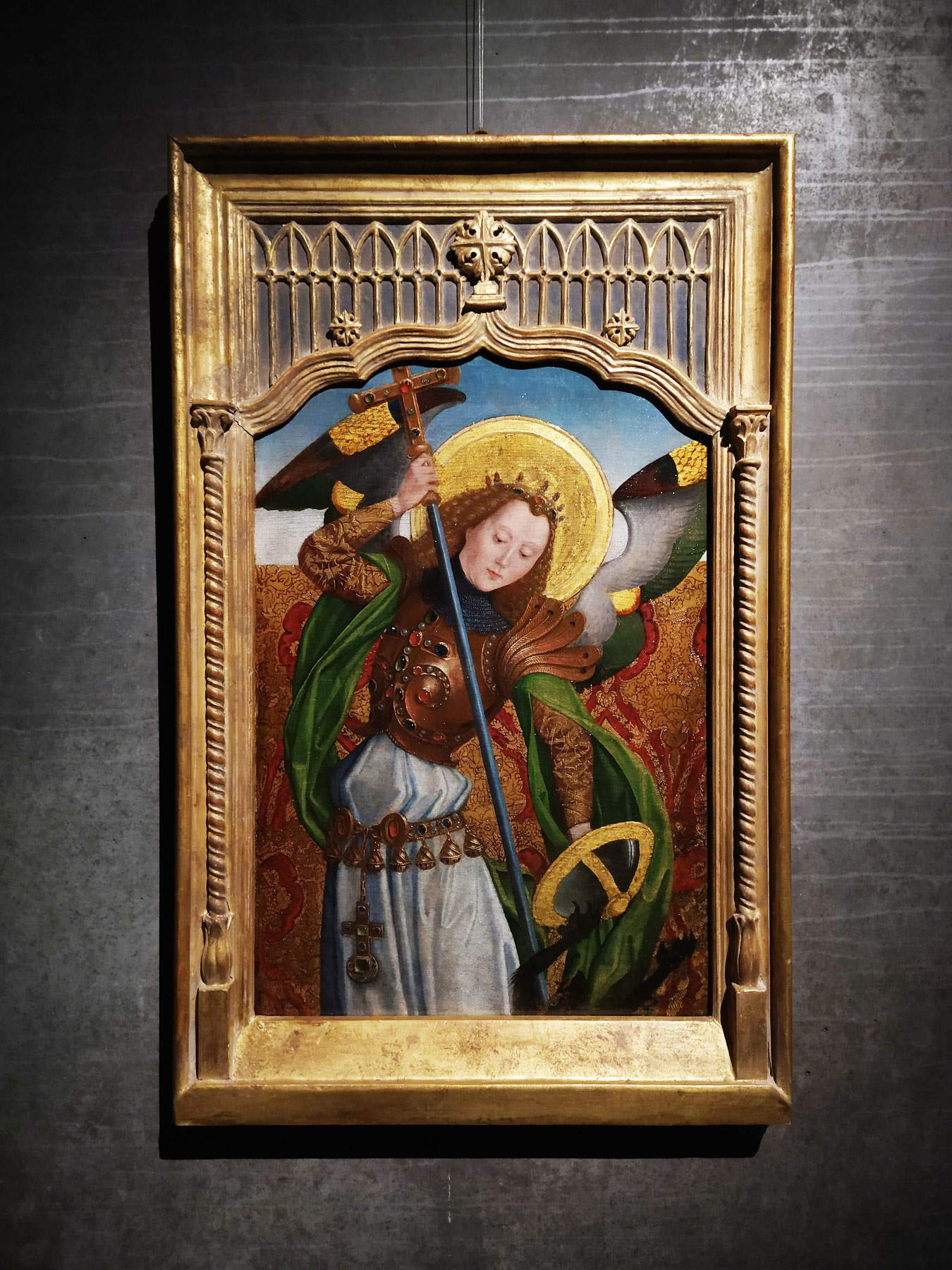
This is a portrait of Luce Balla, Giacomo’s eldest daughter, who, after having essayed the most extreme peaks of the Futurist avant-garde, in the last years of her career returned to a markedly figurative painting, which, however, also included elements typical of Futurism, such as, in this case, the background behind the girl. The work is dated on the back and comes from the artist’s home, where it remained until 1993, when the painter’s estate was divided among his heirs.
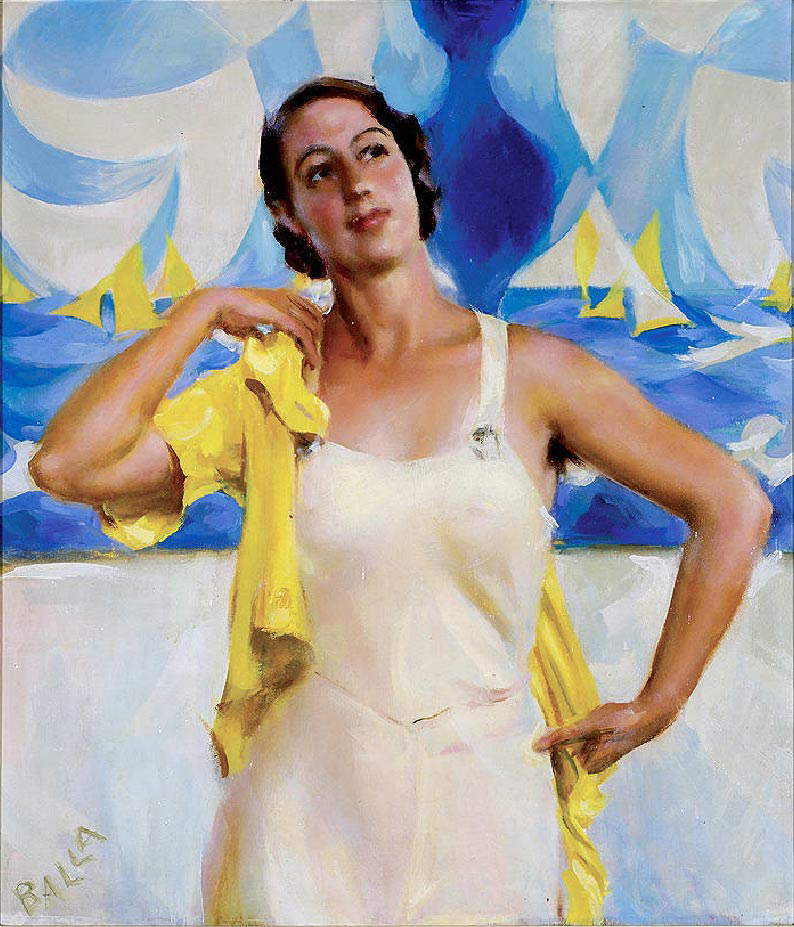
A large-format and little-known portrait by Giuseppe Vermiglio, to whom it has been attributed by Daniele Benati, who has recognized in the work naturalistic attentions and an anti-rhetorical intonation that befit Lombard portraiture of the early seventeenth century and that, according to the scholar, lead precisely to Vermiglio, an artist trained in the bed of Caravaggism and a leading figure in Lombard-Piedmontese figurative culture in the early seventeenth century. We still do not know who the person depicted is: an identification might better clarify the relationships Vermiglio had with patrons in early 17th-century Milan.
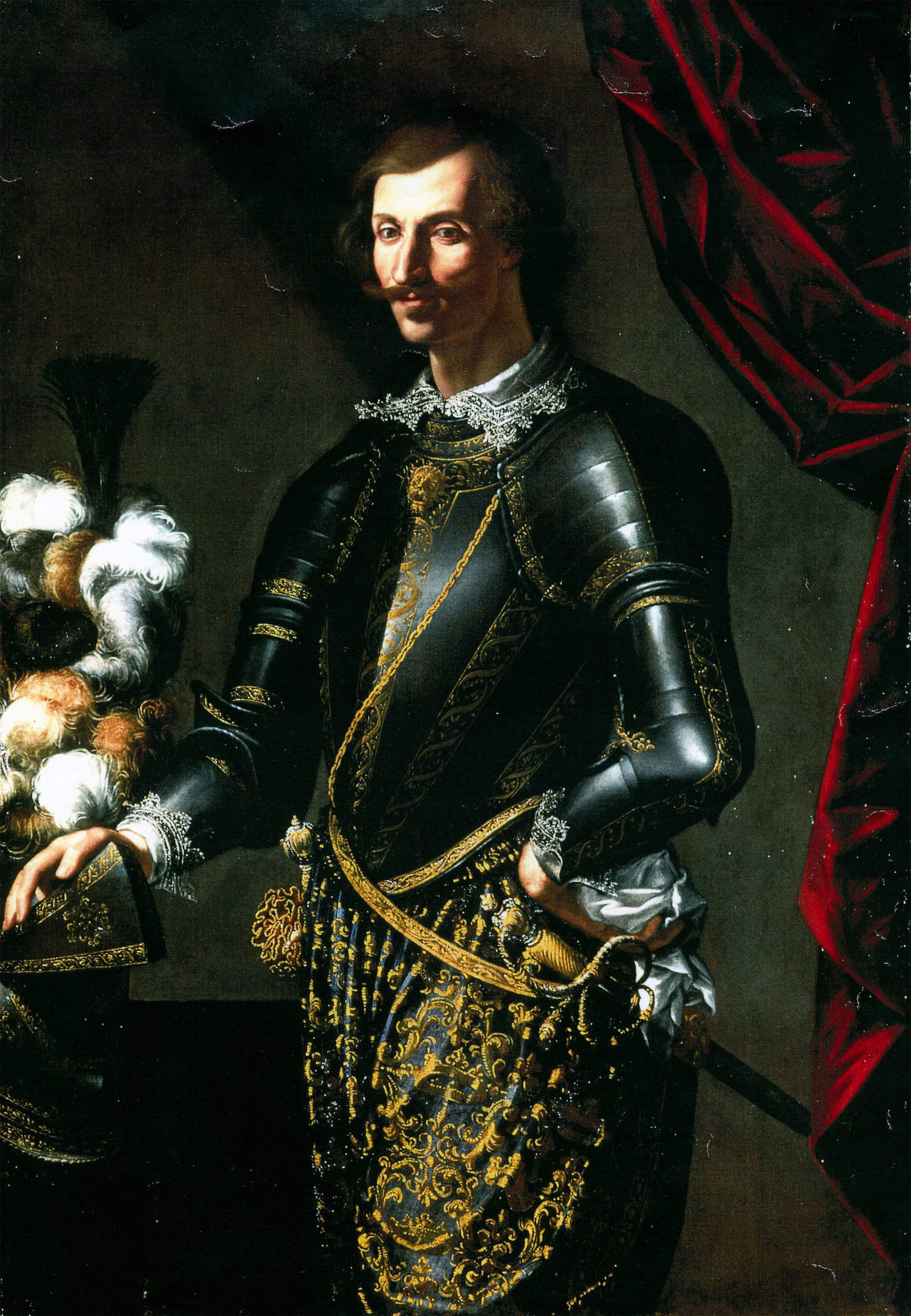
Botticelli, which won the prize for best sculpture with a wooden Saint Sebastian by Pietro Lombardo, is presented with perhaps the best selection of sculpture in the entire BIAF: the exhibition includes a Blessing Christ by Agostino di Duccio, a rarity by this important Renaissance sculptor, a follower of Donatello.
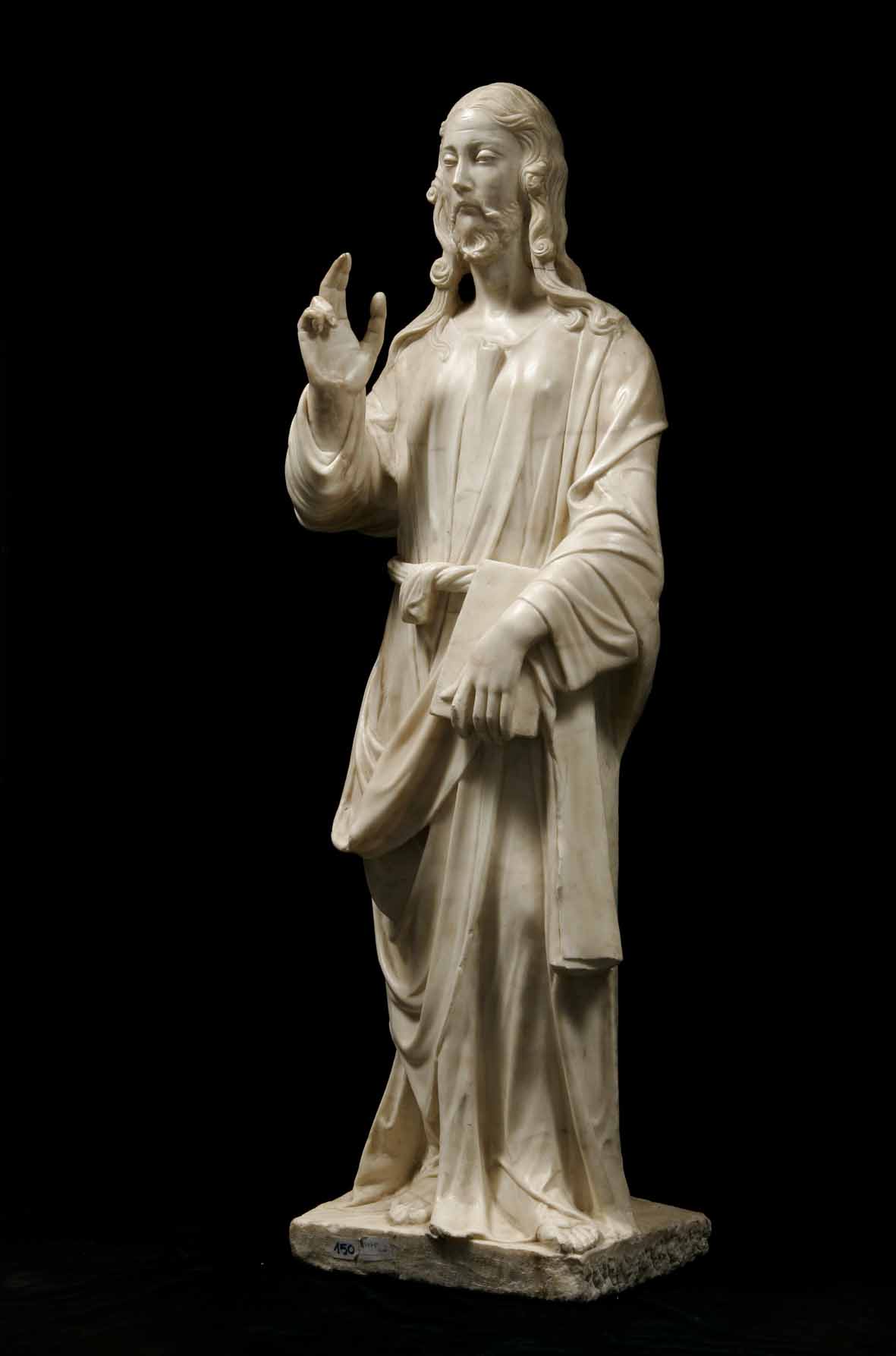 Agostino
AgostinoSwiss antiquarian De Jonckheere makes his BIAF debut with a selection of works by Flemish artists from the 15th century through Pieter Brueghel and David Teniers. Of particular note is this Madonna and Child attributed to Paul Coecke van Aelst, assisted by the intervention of his collaborators. A work characterized by its marked attention to detail, it has known a number of replicas, usually attributed to the school of Mabuse (Jan Gossaert, so called from the name of the town where ncque, Mabeuge), a painter to whom this composition has often been likened.
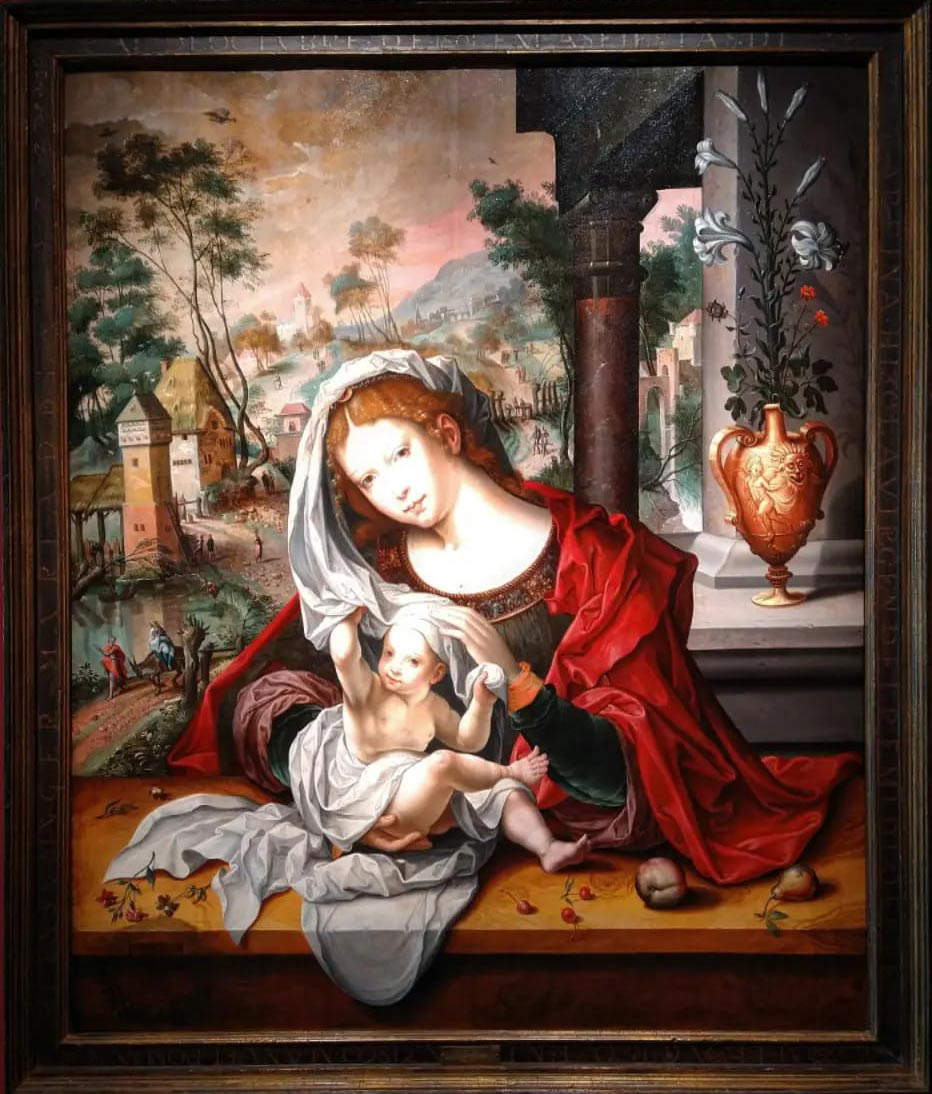
Warning: the translation into English of the original Italian article was created using automatic tools. We undertake to review all articles, but we do not guarantee the total absence of inaccuracies in the translation due to the program. You can find the original by clicking on the ITA button. If you find any mistake,please contact us.